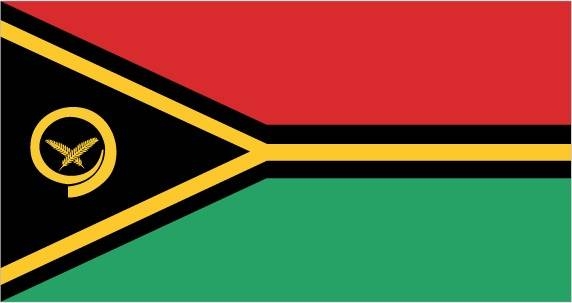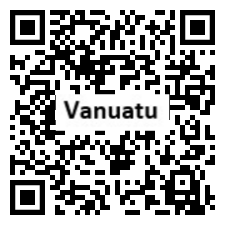Country Summary




Introduction
Background
Multiple waves of colonizers, each speaking a distinct language, migrated to the New Hebrides in the millennia preceding European exploration in the 18th century. This settlement pattern accounts for the complex linguistic diversity found on the archipelago to this day. The British and French, who settled the New Hebrides in the 19th century, agreed in 1906 to an Anglo-French Condominium, which administered the islands until independence in 1980, when the new name of Vanuatu was adopted.
Geography
Area
total: 12,189 sq km
land: 12,189 sq km
water: 0 sq km
Climate
tropical; moderated by southeast trade winds from May to October; moderate rainfall from November to April; may be affected by cyclones from December to April
Natural resources
manganese, hardwood forests, fish
People and Society
Population
308,043 (2022 est.)
Ethnic groups
Melanesian 99.2%, non-Melanesian 0.8% (2016 est.)
Languages
local languages (more than 100) 63.2%, Bislama (official; creole) 33.7%, English (official) 2%, French (official) 0.6%, other 0.5% (2009 est.)
Religions
Protestant 70% (includes Presbyterian 27.9%, Anglican 15.1%, Seventh Day Adventist 12.5%, Assemblies of God 4.7%, Church of Christ 4.5%, Neil Thomas Ministry 3.1%, and Apostolic 2.2%), Roman Catholic 12.4%, customary beliefs 3.7% (including Jon Frum cargo cult), other 12.6%, none 1.1%, unspecified 0.2% (2009 est.)
Population growth rate
1.63% (2022 est.)
Government
Government type
parliamentary republic
Capital
name: Port-Vila (on Efate)
Executive branch
chief of state: President Nikenike VUROBARAVU (since 23 July 2022)
head of government: Prime Minister Ishmael KALSAKAU (since 4 November 2022)
Legislative branch
description: unicameral Parliament (52 seats; members directly elected in 8 single-seat and 9 multi-seat constituencies by single non-transferable vote to serve 4-year terms (candidates in multi-seat constituencies can be elected with only 4% of the vote)
Economy
Economic overview
Pacific island agriculture- and tourism-based economy; environmentally vulnerable to cyclones; poor property rights administration; corruption-prone; subsidizing loss-prone state enterprises in agriculture, banking, and airports
Real GDP (purchasing power parity)
$850 million (2020 est.)
Real GDP per capita
$2,800 (2020 est.)
Agricultural products
coconuts, roots/tubers nes, bananas, vegetables, pork, fruit, milk, beef, groundnuts, cocoa
Industries
food and fish freezing, wood processing, meat canning
Exports
$380 million (2019 est.)
Exports - partners
Japan 33%, Thailand 13%, Mauritania 13%, South Korea 11%, China 9%, Fiji 7% (2019)
Exports - commodities
fish and fish products, tug boats, perfume plants, mollusks, cocoa beans (2019)
Imports
$460 million (2019 est.)
Imports - partners
China 29%, Australia 18%, New Zealand 11%, Fiji 11%, Taiwan 5%, Thailand 5% (2019)
Imports - commodities
refined petroleum, fishing ships, delivery trucks, poultry meats, broadcasting equipment (2019)
Exchange rates
vatu (VUV) per US dollar -
Page last updated: Friday, November 04, 2022
